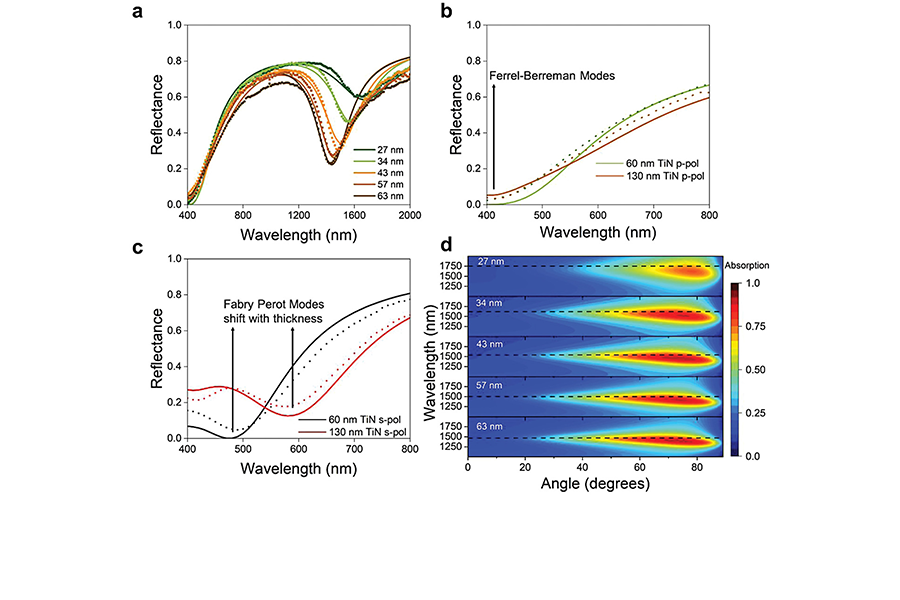Researchers tailor thickness of conducting nitrides and oxides to enhance their photonic applications

Key research finding
Purdue University researchers found that by tailoring the film thickness of conducting nitrides and oxides, specifically plasmonic titanium nitride (TiN) and aluminum-doped zinc oxide (AZO), they can control the materials’ optical properties, most notably their epsilon near zero (ENZ) behaviors. The TiN and AZO materials developed at Purdue also feature the lowest reported optical losses. This provides novel applications for the telecommunications field and furthers the study of many optical nonlinearities.
Vladimir M. Shalaev and Alexandra Boltasseva, Purdue professors of electrical and computer engineering, and their team of researchers, led by then-postdoctoral researcher Soham Saha, investigated this method of controlling the ENZ point, the wavelength at which a material is neither dielectric nor metallic. When light travels through an ENZ material, its group velocity slows to near zero, and it’s able to interact with the material for a longer period. This gives rise to many interesting nonlinearities. However, with most conventional materials, the ENZ point is fixed and difficult to move.
What the researchers demonstrated is that the thickness association of the optical properties is one of the easiest things to manipulate, enabling them to grow films with different ENZ properties using the same growth environment. By tailoring the thickness of material films and controlling light absorption near the ENZ regime, researchers can study absolute ENZ physics at many different wavelength ranges. The enables a wide range of nonlinear optical phenomena, including all-optical switching, time refraction and high-harmonic generation.
Purdue professors’ expertise
Shalaev, the Bob and Anne Burnett Distinguished Professor of Electrical and Computer Engineering, has been a pioneer in the fields of transformation optics, metamaterials, nanophotonics and plasmonics since 1990. He is the scientific director of nanophotonics at Purdue’s Birck Nanotechnology Center.
Boltasseva is the Ron and Dotty Garvin Tonjes Professor of Electrical and Computer Engineering at Purdue. She pioneered the field of alternative plasmonic materials and the application of conducting oxides, nitrides and MXenes in photonics.
Journal Article Publication
The study is published in the journal Advanced Materials. An abstract is available online.
